Planning an event is a daunting task for most nonprofits. There is so much that needs to be done to get staff, board members, volunteers, and donors to put their time, treasure, and talent towards supporting the organization. You may be wondering, will adding fundraising tickets to the event just complicate things? The answer is simple: it has the potential to make your event more effective and to help you raise more money.
Luckily, CauseVox is here to help you plan your next ticketed fundraising event. This guide will walk you through a step-by-step process for planning a ticketed event with loads of great free tools and templates to make planning smoother. CauseVox also offers an integrated ticketing system so you can present your donors with a one-stop shop for everything related to your event.
These 11 steps will simplify your ticketed event plan, from initial outline, all the way through to donor acknowledgement!
1. Decide On Event Format: Virtual, In-Person or Hybrid?
The first step when planning a fundraising event today is to decide on the format. Since the beginning of the COVID-19 pandemic in 2020, many nonprofit organizations have found success moving away from in-person fundraising towards virtual and hybrid options. Only you know whether your community is ready to gather in-person for an event, but here are some things to consider:
- Virtual events let you raise more with less effort: Hosting a virtual event allows you to lower your costs and appeal to a wider audience.
- In-person events may be more attractive to some donors: There’s no substitute for the energy and excitement of a live event.
- Auction procurement may be a challenge: Many organizations rely on auctions to generate excitement for in-person events. Due to the pandemic, however, retailers may not be able to fulfill procurement requests.
- When raising funds virtually, avoid Text to Give: Text To Give involves too many steps for the donor. Cut down the effort by sending giving links instead!
- Fundraising tickets should respond to event format: Make sure that the perks you are offering at each ticket level are attractive enough to justify the cost. For a virtual event, this might mean delivering meals or beverages to your donors or lowering the ticket price to make the event more accessible.
Hybrid events combine elements of in-person and virtual events. For example, you could host a peer-to-peer fundraising campaign and celebrate your success with an in-person ticketed gala. While we are still navigating the restrictions and uneasiness surrounding in-person events, hybrid events may be a great way to appeal to your entire audience. For more information about hosting a successful hybrid event, check out our free webinar.
2. Plan Your Event
Once you have decided on your event format, it’s time to start planning! For many nonprofits, the beginning of the planning process can be an overwhelming time. With a long list of to-dos and limited time to accomplish everything, you might feel ill-prepared for the planning stage. The good news? CauseVox offers tools and templates that will help you get started so that you don’t have to begin from scratch.
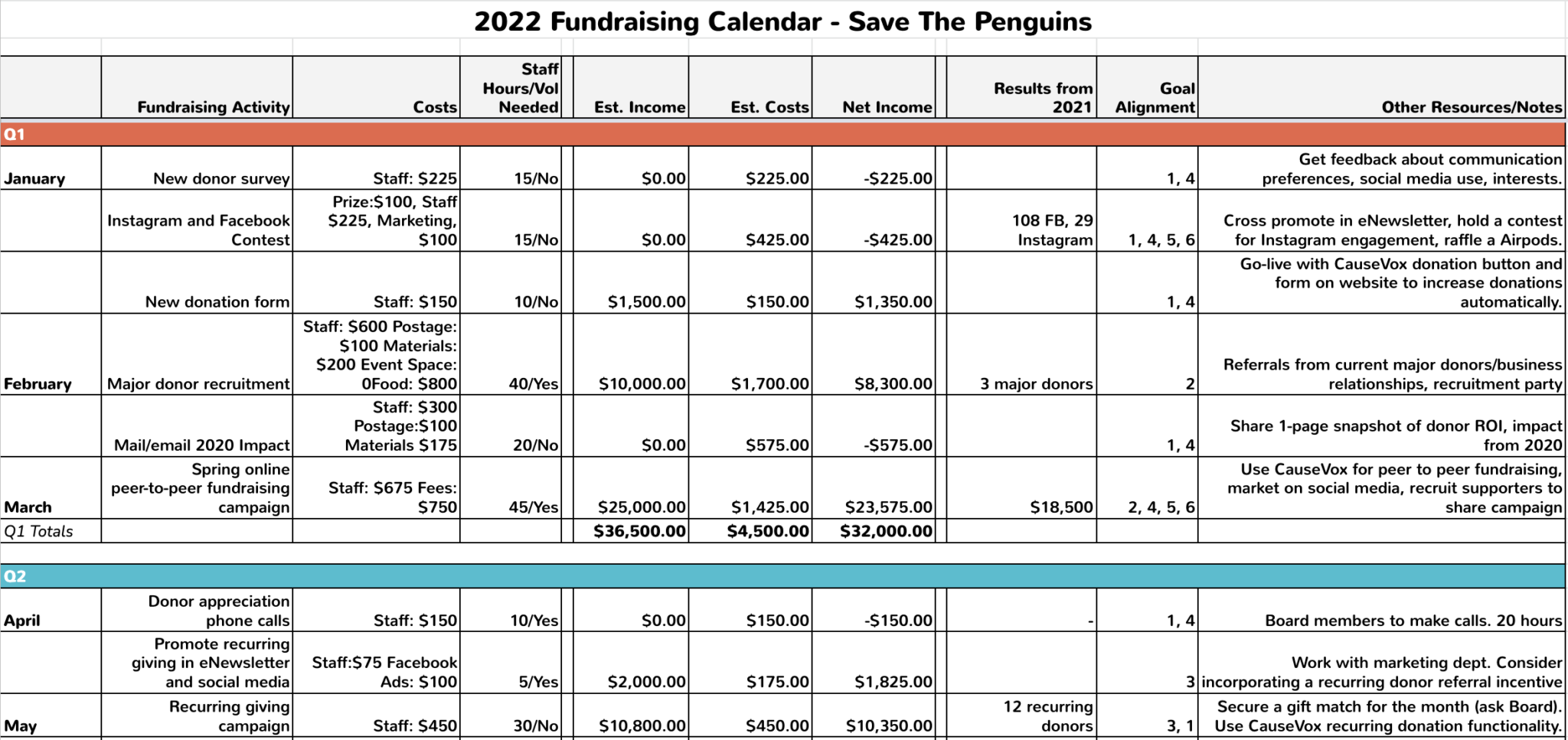
With CauseVox’s free fundraising plan, you’ll have the templates you need to start planning right away. Don’t waste time designing a new system for event planning every time.
Download the free fundraising plan today!
[amp-optin id=24992]
Once you have your plan and calendar in place, it’s time to set out your goals. How much do you want to raise? How many fundraising tickets do you hope to sell? What is your attendee goal?
The last thing to ask yourself when planning your event is what the hook will be for your audience. What will drive them to sign up for this event, besides their commitment to your mission? At CauseVox, we have seen nonprofits find success with walk-athons, galas, and challenges that appeal directly to your audience. For example, Parkinson’s Nebraska exceeded their fundraising goal by asking their supporters to participate in a fun and engaging challenge to walk the total distance of Nebraska.
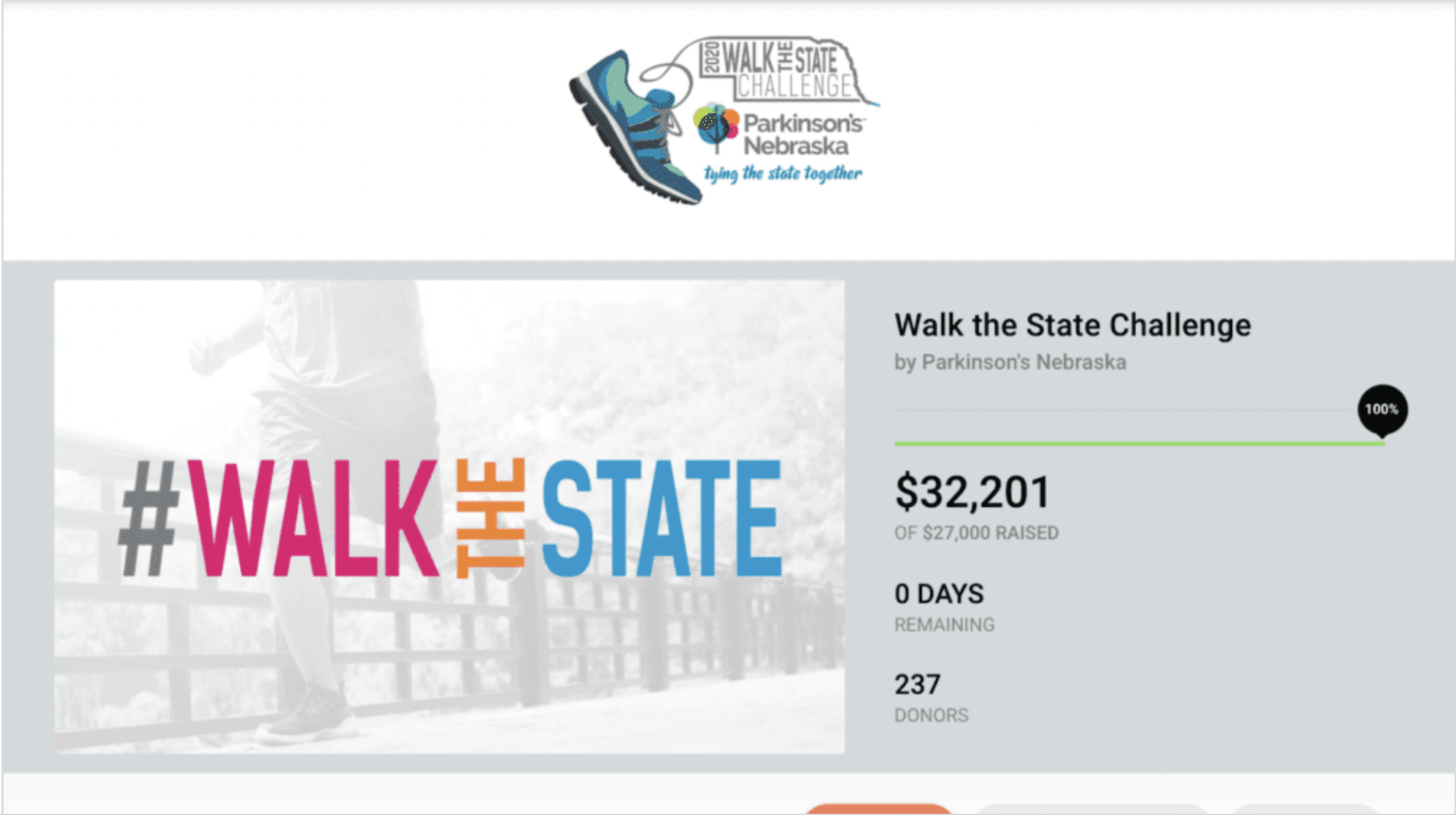
If you’re stumped over how to hook your audience with a great event concept, check out our list of top-performing fundraising event ideas for nonprofits!
3. Assemble A Cohesive Fundraising Team
Now that you have your fundraising plan in place, it’s time to assemble a winning team to achieve your goals. With all the excitement around a new event, it can be a challenge to keep everyone on the same page. So how do you keep your dream team from turning into a nightmare?
Most often, communication breaks down when team members do not clearly understand their roles and responsibilities. In order to prevent this from happening, consider making a RACI diagram to organize responsibility for the various tasks needed to reach your goal.
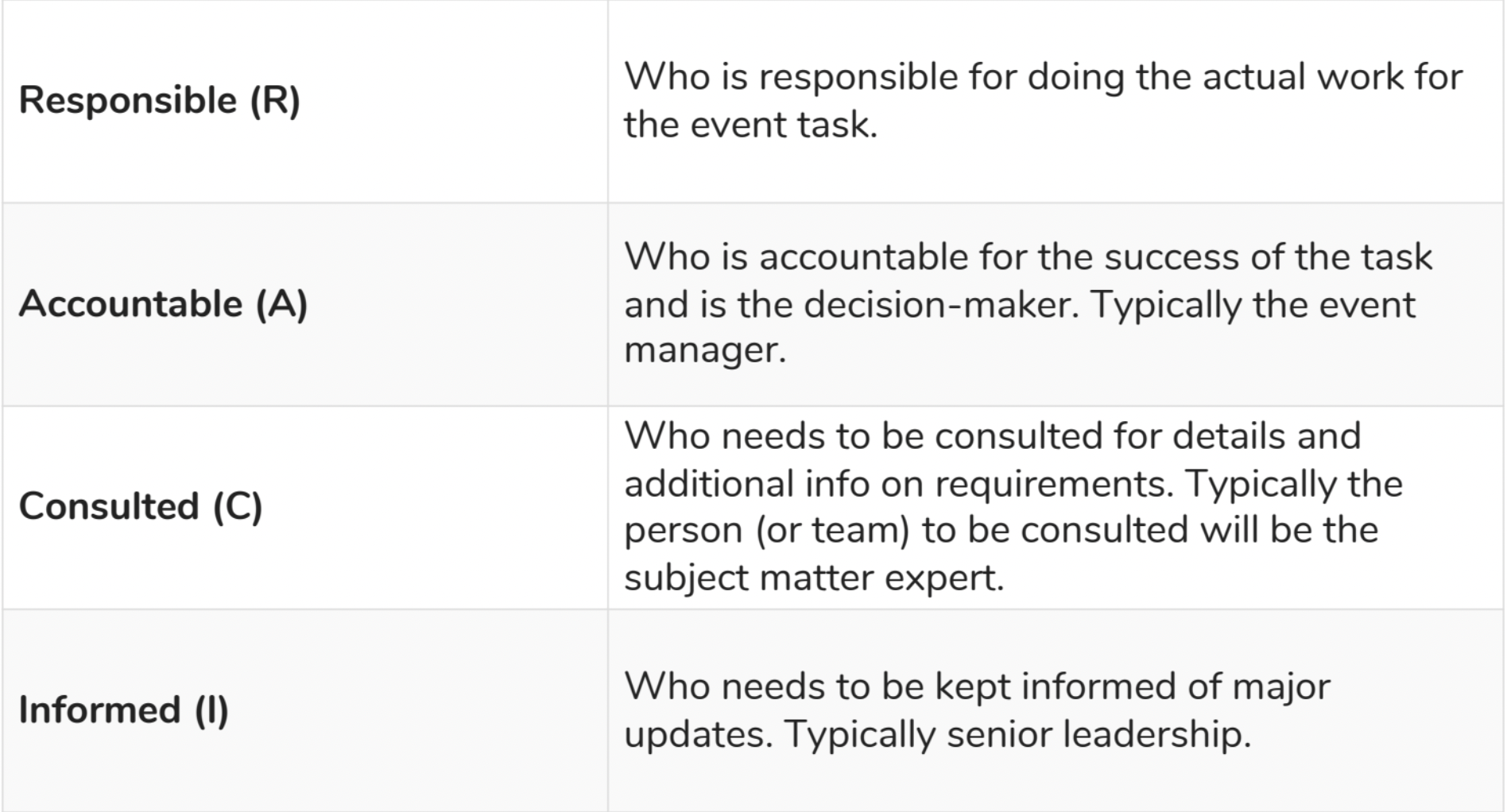
By creating a diagram listing team members on one axis and necessary tasks on another, you can limit overlap between roles. Everyone will have a better understanding of what is expected of them and where they fit into the team.
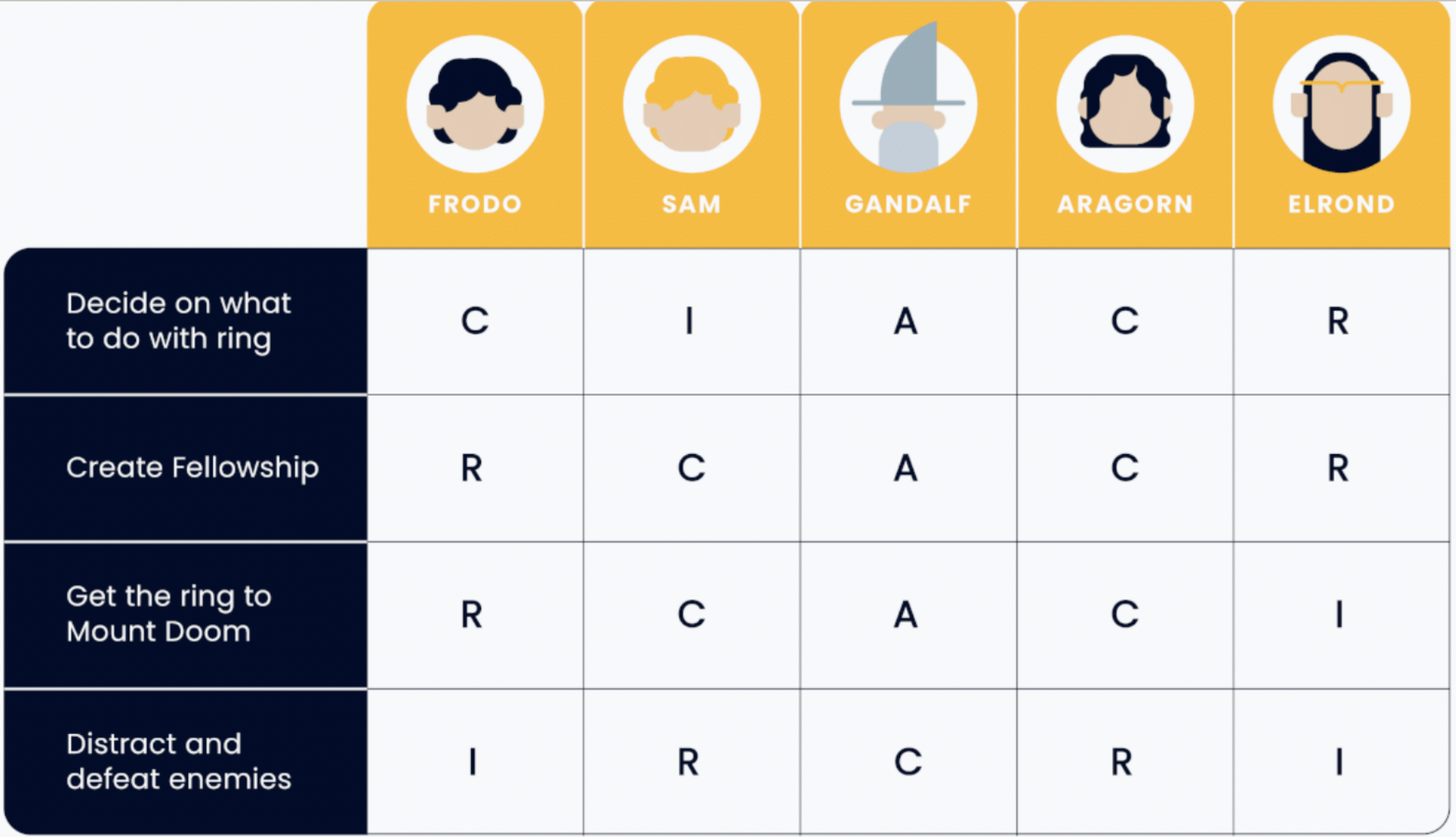
Not only will RACI Charts limit conflict within your group, but they will also save you tons of time. Check out 9 time saving fundraising event tips for more insights.
4. Determine Your Main Revenue Streams
You’ve got your fundraising goal; now how do you reach it? It’s crucial that you understand where your revenue will come from for every event. Create a list of potential revenue sources and consider how much you hope to raise with each. Potential revenue sources include:
- Donations
- Peer-to-Peer Fundraising Pages
- Fundraising Tickets
- Auctions
- Raffles
- Sponsorships
- Matching Gifts (Tip: Donors will give on average 50% more if their donation will be matched!)
Remember that regardless of your event format, you will likely raise the majority of your funds before event day. So plan ahead and make sure that you are appropriately promoting your various revenue streams before your event.
5. Make Fundraising Appeal
Writing your fundraising appeal is a crucial step in event planning. Make sure you are putting in the proper amount of care and attention into the appeal so that your donors feel inclined to support your cause.
Think about how you can personalize the message to nurture relationships with significant donors. Personalization has been shown to increase revenue by up to 760% for some nonprofits.
A fundraising appeal is also the perfect time to share a story with your community. Your community wants to know how you are addressing the problem or issue of focus for your organization. Reach out to beneficiaries to craft a story that will make donors feel inspired to give.
Most importantly, when planning your appeal, come up with one or two clear actions that you want your donors to take. For example, do you want them to make a donation? Register for an event? Purchase fundraising tickets?
Fundraising appeals take some work, but it’s worth it in the end. For more great tips and tricks to help you write a winning appeal for your event, check out our Fundraising Appeal Throwdown Webinar.
6. Drive Revenue With Fundraising Tickets
For some event types, fundraising tickets are a great way to generate additional revenue for your organization. The most common types of ticketed events that we have seen are galas, entertainment-focussed fundraisers like concerts, and competitions. These event types all offer something special for donors in exchange for their ticket purchase.
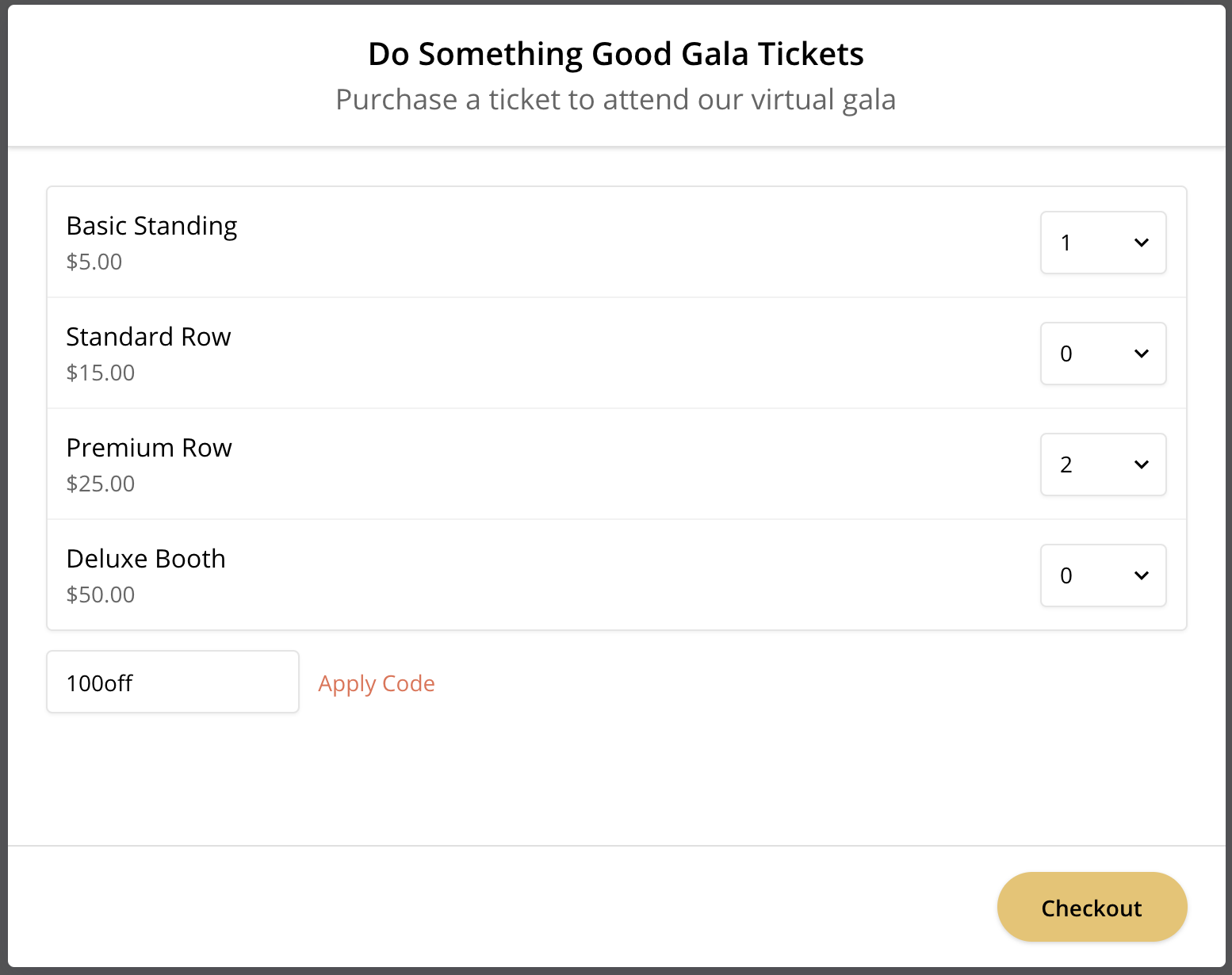
If you decide to include tickets for your event, consider what sorts of perks you will offer the donor with their ticket purchase. These can be tangible things that the donor will receive like a T-shirt or meal delivery. Or you can communicate the impact of the donor’s added contribution by tying it back to your mission.
You can always create a tiered approach where perks vary according to the price of the ticket. This lets you sell tickets to a broader segment of your audience.
Fundraising tickets not only help raise funds for your organization, but they also allow you to collect attendee information. If you want to make your event fully accessible, consider adding a $0 ticket tier. This will add a sense of exclusivity to your event and help you track all your attendees!
7. Choose Your Ticketing Platform
Choosing a ticketing platform is an important decision. If you have run a ticketed fundraising event in the past, you may be familiar with the Frankenstein Effect. You have one site for your tickets, another for donations, and a third with information about the event. Sending your donors to different pages and sites is guaranteed to reduce their willingness to give. So when choosing a ticketing platform, it’s best to opt for one that offers an all-in-one approach.
CauseVox recently launched Integrated Ticketing, letting you sell tickets from customizable donation pages. Here are just a few of the many benefits of choosing CauseVox as your ticketing platform.
- Create all-in-one event pages for fundraising tickets, donations, and peer to peer fundraising
- 75% faster loading ticket and donation forms
- Guests can purchase on any device and all forms and pages are mobile-optimized
- CauseVox will automatically send purchasers ticket confirmation emails
- All pages are fully customizable
- CauseVox makes reporting and data exportation easy!
For more information about how CauseVox’s integrated ticketing feature makes it easy to sell from an all-in-one page, check out this webinar.

8. Consider A Peer-To-Peer Campaign As Part of Your Event
Peer-to-peer is one of the fastest growing fundraising methods today. And there’s a reason for that: organizations raise twice as much on average with peer-to-peer campaigns.
Peer-to-peer fundraising involves activating your supporters to fundraise on your behalf by setting up their own giving pages. These highly engaged supporters may include board members, volunteers and others who care deeply about your mission.
CauseVox lets you set up a peer-to-peer campaign in minutes with customizable giving pages for all your supporters. We also offer toolkit templates so that your fundraisers can hit the ground running.
To learn how you can host a winning peer-to-peer campaign as part of your ticketed fundraiser, our primer blog post has everything you need!
9. Sell, Sell, Sell!
Now that you have your event plan and your revenue streams identified, it’s time to start selling fundraising tickets and bringing those donations in the door! In today’s world of virtual events and social media promotion, there’s a lot of crossover between fundraisers and marketers.
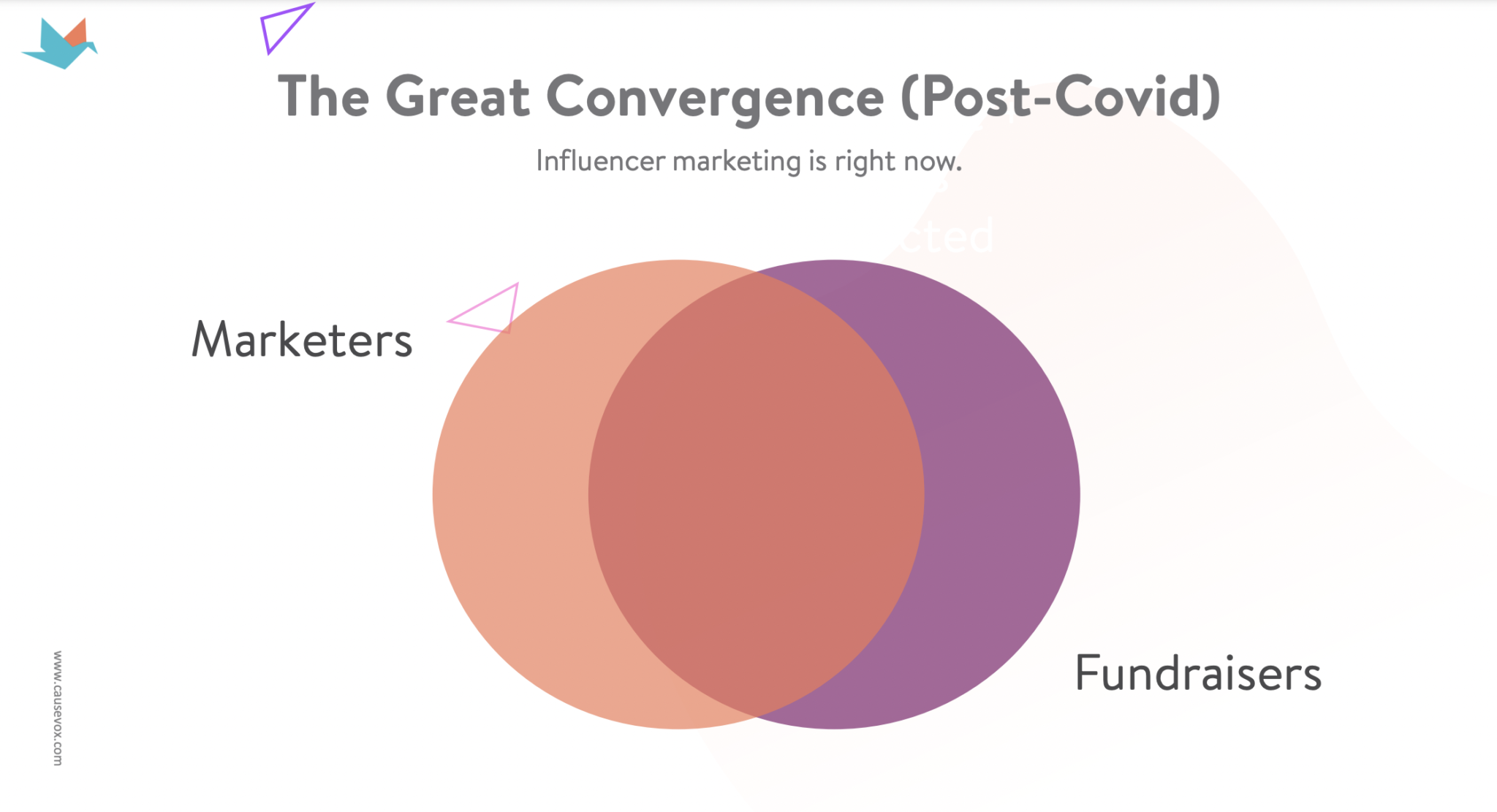
If you’re not sure the best way to approach this new world of marketing-based fundraising, here are a few tips to help get you started:
- Implement a multi-channel marketing plan: It takes on average 7 touches for a user to make a sale online. Make sure you are communicating with all channels – social media, email, direct mail, even phone calls!
- Enlist supporters to create user-generated content: When advertising, it always helps to get testimonials from some of your more engaged supporters. Their recommendation will encourage others to trust your organization.
- Communicate the donor’s impact: Include the impact of a donor’s gift right in the order form. For example, if 20% of a fundraising ticket purchase will be put directly towards your mission, be sure to let your donors know!
- Explain how your donor will benefit: What perks will your donor receive by making a donation or purchasing fundraising tickets? Clearly lay these out to incentivize purchases.
- Use scarcity to drive ticket sales: Everyone wants to attend exclusive events. Implement end dates, countdowns, and limited ticket numbers to encourage your donors to make a purchase.
- Upsell: Offer better deals at higher prices so that your donors are incentivized to give more. Remember to tie each tier of ticket back to your impact!
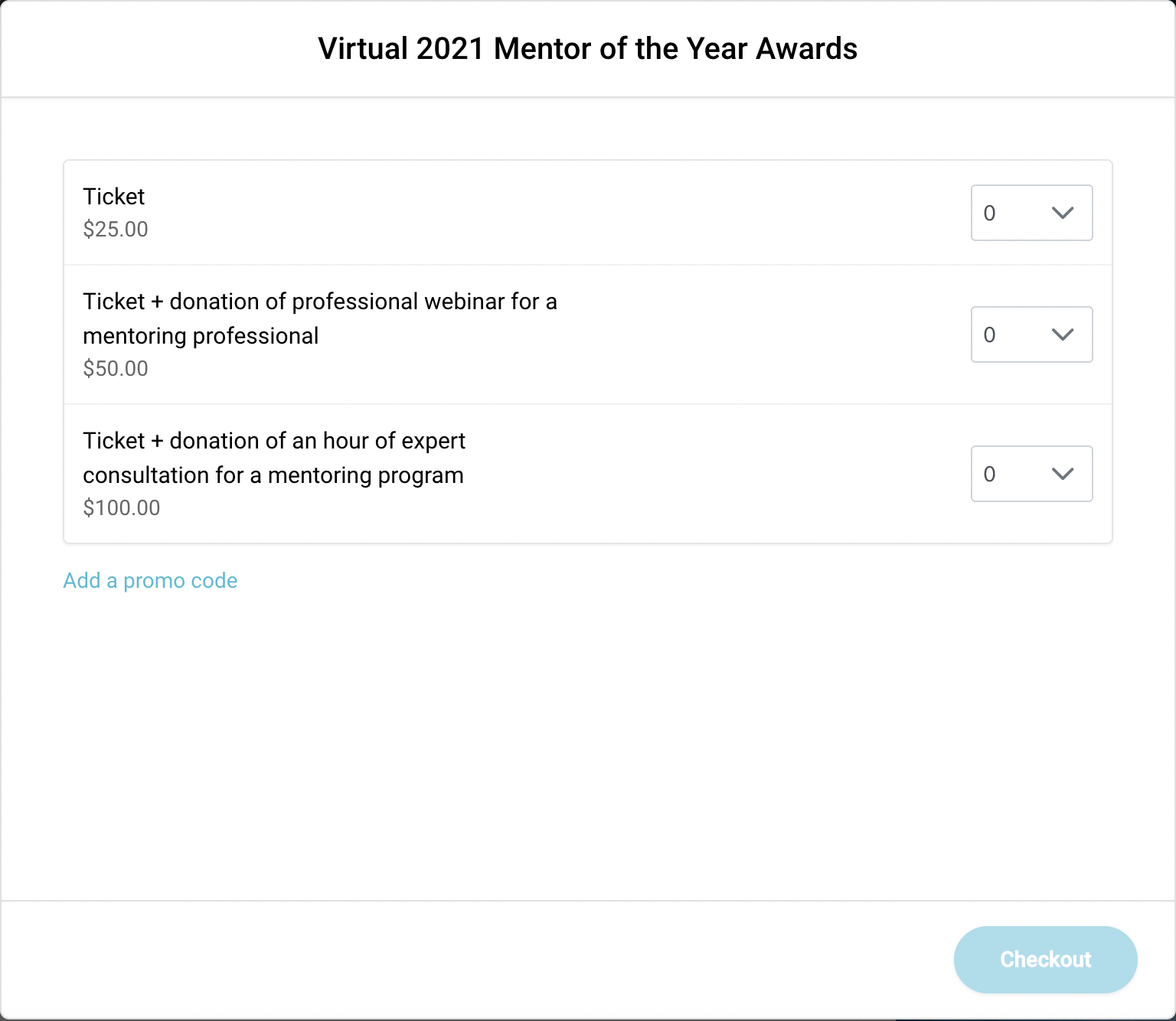
One of the best ways to communicate the impact your donors are making is to include a fundraising thermometer on your giving site. That way, supporters can see exactly how much their contribution moves the needle towards your goal. CauseVox even offers a free easily embeddable fundraising thermometer!
If you’re still struggling to successfully market your event, learn how you can sell more fundraising tickets with this free webinar!
10. Monitor Ticket Sales: Watch Those Fundraising Tickets Roll In!
Hopefully, you’re now able to sit back and watch the sales and donations roll in for your event. You may want to take your hands off the wheel here, but remember there’s still plenty of work that needs doing!
Monitoring ticket sales and donations leading up to and during an event or campaign will ensure that you are hitting your goals. If you find that sales are lagging in one revenue stream, you may need to adjust your strategy a bit.
With CauseVox integrated ticketing, you will automatically receive an email notification whenever a buyer purchases a ticket, saving you time and energy.
11. Reconcile Data & Thank Donors
The final step in your event plan is to devise a strategy for reconciling data and thanking donors after the event. Studies have shown that timely acknowledgements drastically increase a donor’s likelihood of giving again. You want to have the acknowledgement written and the contact information ready to go as soon as the event ends.
With CauseVox, you can automate data collection so that all ticket sales are logged in a Google Sheet or CRM. From there, it’s easy to export the data and generate a mailing so that your donors are thanked immediately after the event.
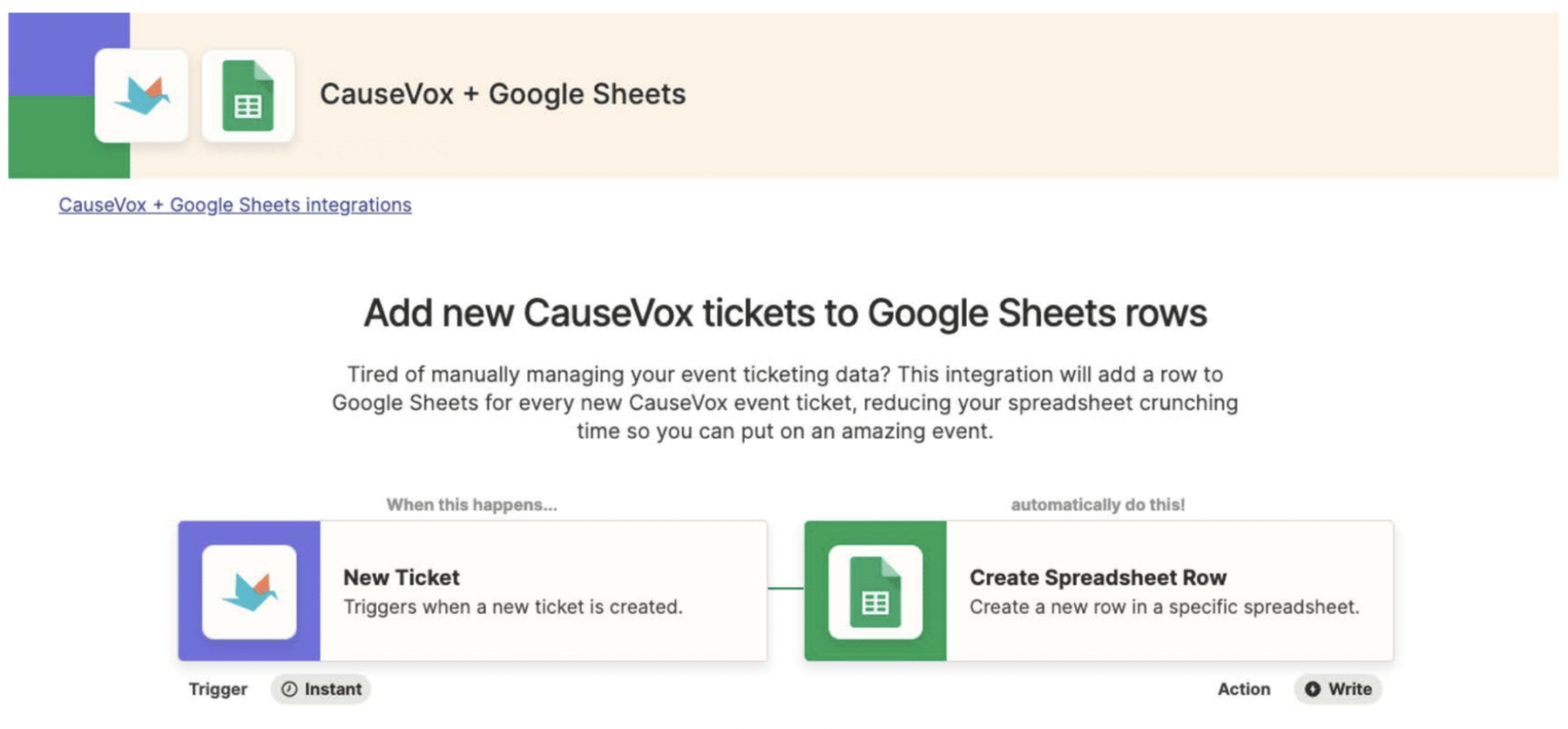
Host Your Ticketed Fundraising Event Today!
Follow these 11 simple steps and you’re sure to plan a successful ticketed event. We’ve given you all the tools and templates you need to get started. So what are you waiting for?
Remember to keep the focus on your donors. Ask yourself what would be easiest for them and how they would like you to communicate about the event. For an optimized ticketing system and all-in-one event page, CauseVox is here to help.
To learn more about how CauseVox can help you set up ticketing for your fundraising event, schedule a demo today!




